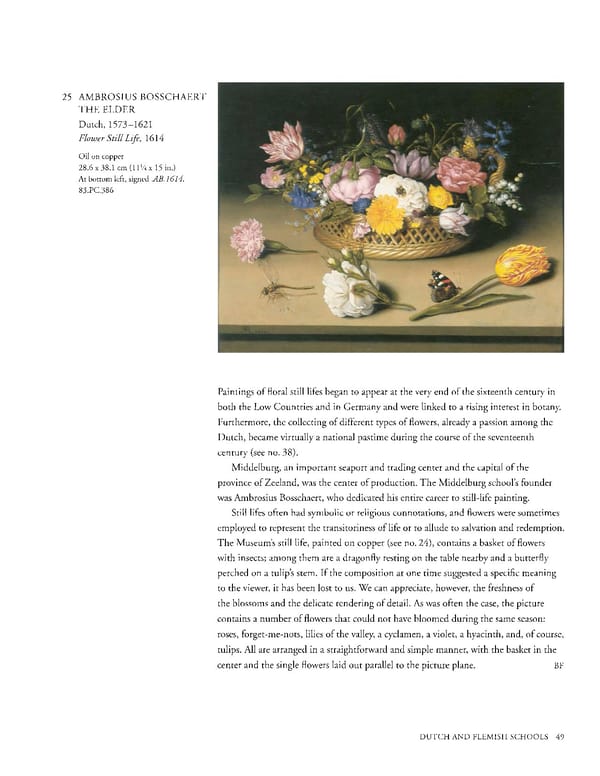25 AMBROSIUS BOSSCHAERT THE ELDER Dutch, 1573-1621 Flower Still Life, 1614 Oil on copper 28.6x38.1 cm(11¼ x 15 in.) At bottom left, signed AB.1614. 83.PC.386 Paintings of floral still lifes began to appear at the very end of the sixteenth century in both the Low Countries and in Germany and were linked to a rising interest in botany. Furthermore, the collecting of different types of flowers, already a passion among the Dutch, became virtually a national pastime during the course of the seventeenth century (see no. 38). Middelburg, an important seaport and trading center and the capital of the province of Zeeland, was the center of production. The Middelburg school's founder was Ambrosius Bosschaert, who dedicated his entire career to still-life painting. Still lifes often had symbolic or religious connotations, and flowers were sometimes employed to represent the transitoriness of life or to allude to salvation and redemption. The Museum's still life, painted on copper (see no. 24), contains a basket of flowers with insects; among them are a dragonfly resting on the table nearby and a butterfly perched on a tulip's stem. If the composition at one time suggested a specific meaning to the viewer, it has been lost to us. We can appreciate, however, the freshness of the blossoms and the delicate rendering of detail. As was often the case, the picture contains a number of flowers that could not have bloomed during the same season: roses, forget-me-nots, lilies of the valley, a cyclamen, a violet, a hyacinth, and, of course, tulips. All are arranged in a straightforward and simple manner, with the basket in the center and the single flowers laid out parallel to the picture plane. BF DUTCH AND FLEMISH SCHOOLS 49
 Masterpieces of the Getty Museum: Paintings Page 49 Page 51
Masterpieces of the Getty Museum: Paintings Page 49 Page 51